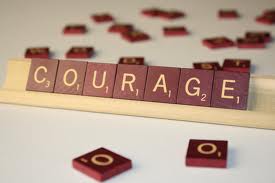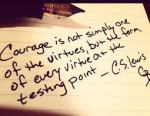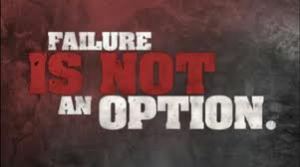Courage is what it takes to stand up and speak; courage is also what it takes to sit down and listen.” – Winston Churchill
A story is told of Leonidas, King of Sparta, who was preparing to make a stand with his Greek troops against the Persian army in 480 B.C. when a Persian envoy arrived. The man warned Leonidas of the futility of trying to resist the advance of the huge Persian army. “Our archers are so numerous,” said the envoy, “that the flight of their arrows will darken the sun.” “So much the better,” replied Leonidas, “for we shall fight them in the shade.” Leonidas made his stand, and died with his 300 troops.
It’s one thing to have courage as a leader but another thing to be foolish. While Leonidas’ actions may be considered foolish in retrospect, courage can be one of your most valuable assets as a leader. Here are four characteristics of courageous leaders.
They are willing to stand alone
Courageous leaders are those who know where they are going and what it takes to get there. They can be both inspiring and complex. Their focus and demeanor can be misinterpreted by those who may not share the same leadership DNA who had rather go all out with a passion than play it safe with an assumption.
Leaders who are willing to stand alone do so not always by choice but sometimes out of necessity. When you believe so strongly in your cause that you are willing to stand alone it gives the signal to the rest of your team that you are all in. Be it your values, convictions, ethics, or just the general principles of sound leadership you will earn the trust and respect of those you lead when you are willing to go it alone for what is right.
They are willing to think different
Courageous leaders have cut the strings to the safety nets of a “this is the way we’ve always done it,” mentality and have wagered their chips on new and innovative ways of thinking. Courageous leadership is not about throwing caution to the wind where anything goes, but it’s recognizing that being competitive in the 21st century requires more.
Have you noticed how leaders who think different can be restless? They are constantly brainstorming new ideas and methodologies and challenging old assumptions. They do so not out of disrespect, but out of a desire to contribute in more meaningful ways not yet realized. Courageous leaders are different because they think different.
They are willing to take risks
Founded during The Panic of 1837, would you know of Proctor and Gamble had someone not taken a risk? Founded during The Panic of 1873, you now know of GE because someone took a risk. GM was founded during The Panic of 1907 all because someone took a risk. United Technologies was founded in 1929 during the Great Depression all because someone took a risk. It was during the Oil Crisis of 1973 that Frederick W. Smith founded FedEx. I think it was a risk worth taking.
Courageous leaders are risk takers. They have a high threshold for failure because they understand it’s the surest way to success. Risk takers don’t wait until conditions are just right in order to step up and take a chance. What great idea have you been holding back on because you were afraid to take a risk?
They are willing to make mistakes
Courageous leaders are not perfect. They make plenty of mistakes and at times can be challenging to work with. Their mistakes not made out of an abundance of caution but because they have long sense progressed beyond it. They live not just for the here and now, but are passionate about the future and its possibilities.
George Bernard Shaw said, “A life spent making mistakes is not only more honorable, but more useful than a life spent doing nothing.” Courageous leaders are willing to make mistakes and willing to risk looking foolish in order to live out the life she or he has dreamed. The only thing worse is to look back years from now with regrets for what you wished you had done.
What do you say?
© 2014 Doug Dickerson
I invite your feedback!
1. Which one of the four traits did you most identify with?
2. What additional traits would you add?
3. How can we as leaders encourage each other to be more courageous?










